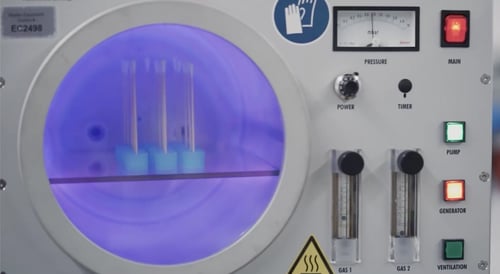Plasma treatment processes are used to plasma clean, activate, etch, and coat. The wide range of applications of plasma treatment technology is beneficial to scientists and engineers, and its history is extensive. An example of plasma occurring in nature is the solar wind, and examples of man-made plasma are neon signs and fluorescent lights. To create man-made plasma, an electrical discharge is distributed through a gaseous species and this causes the gas to dissociate into electrons and ions, as well as the temperature to increase rapidly.
An American man, Irving Langmuir, was the one who first used the word “plasma” to describe ionized gas in 1927. The reason he used this term was because he thought the way blood plasma carries red and white corpuscles and germs is analogous to how the electrified gas carries electrons and ions. He was exploring ways to increase the lifespan of a filament in a tungsten-filament light bulb in the General Electric Research Laboratory, and he eventually developed the plasma sheaths theory and discovered Langmuir waves.
Plasma Treat Different Materials
Plasma treatment technology can be used to plasma treat materials like plastics, metals, and glass. For instance, plasma treatment can be used as a tool to create hydrophobic or hydrophilic surfaces. Plastics, in general, have low surface energy. Plasma activating and etching can increase the surface energy and surface area so that the plastic can bond better to other materials or even with other plastics. For plastics, atmospheric or oxygen gas are commonly used in the plasma cleaning process. Plasma coating can also be used to improve the aesthetics or to protect the material.
Metals can be covered with organic or inorganic components and oxidized layers. For example, when metals undergo a rolling process, it is sprayed with oils and these oils can mix with other fluids on the surface and cause adhesion issues in subsequent processes. Plasma technology is then used to plasma treat and ensure uniform cleaning of the surface of the metal and to break down oxides. Plasma cleaning glass and ceramic is similar to cleaning metals. Common process gases to plasma clean metals are argon and oxygen. Plastic, glass, and ceramics may require plasma treatment before lacquering or gluing, and the process gas is generally oxygen or air.

